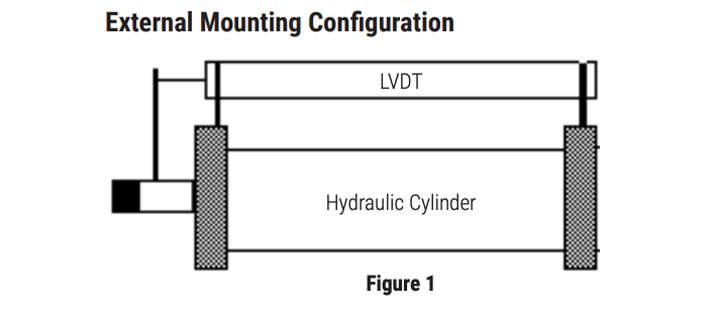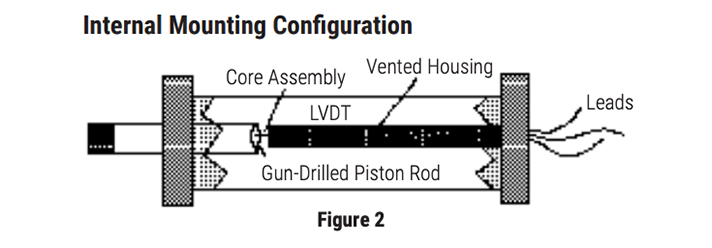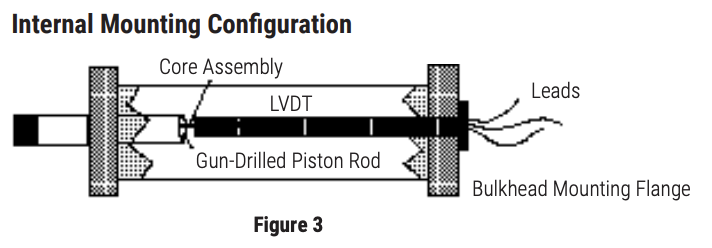LVDTs for Position Sensing in Hydraulic Cylinders
Mounting the transducer external to the cylinder is the easiest implementation. In Figure 1, the LVDT is mounted via clamps or pillow blocks in parallel with the cylinder. The coils are fixed on the cylinder housing, and the core assembly is free to move with the piston rod, providing the displacement measurement.

The alternative is to mount the LVDT directly inside the cylinder, under pressures of 3,000 to 5,000 PSI. To accommodate these high pressures, we can either seal the unit against the pressure, or vent the housing and equalize the pressure. Figure 2 illustrates a vented LVDT mounted inside of a hydraulic cylinder. The piston rod has been gun-drilled to accommodate the LVDT housing, with the core assembly affixed inside the drill hole. As the piston moves in and out of the cylinder, the core moves relative to the coils, producing a voltage output proportional to the piston rod displacement. The leads can be brought out of the cylinder via a pressure fitting.

Alternatively, the LVDT can be sealed against pressure and manufactured with a flange at one end. This allows the unit to be inserted into the cylinder, but terminated external to the pressurized environment, as shown in figure 3.

We compete with magnetostrictive and potentiometric transducers for this application. In displacement ranges under 20”, we have a length, cost, and frequency response advantage over magnetostrictive units. The non-contact design of the core and coils in an LVDT provide longer life and better reliability than a linear potentiometer.